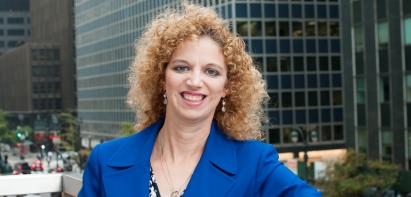Stabilization Year
While 2016 might not be a record year, it's shaping up to be one of adjustment that will provide a more stable base for the future of the industry.
By Suzann D. Silverman, Editorial Director
The heady post-recessionary market was bound to slow sooner or later, and so far, it looks like this is finally the year. It really comes as no surprise, given the forces at work: limited yields due to competition-driven overpricing, tightened financial markets, and global economic and political volatility. There’s also the fact that this recovery is well into its run, and as a recent report from Yardi Matrix points out, it is already among the longest such cycles in history. And, of course, the uncertainty of any presidential election year makes investors more cautious.
At mid-year, investment in U.S. real estate totaled $198.4 billion, according to real estate services giant JLL, down 12.9 percent from year-end 2015, and the prediction was for a full-year decline of 10 to 15 percent. To put this in perspective, though, that follows last year’s record increase for the century to date, trailing only the bubble year of 2007. And JLL predicts 2016’s total sales volume will still top 2014, so from a volume standpoint, this year’s results look likely to continue the steady climb out of the recessionary pit, notwithstanding any modest backsliding from 2015.
While foreign capital flows into U.S. commercial real estate assets have slipped this year, that stems more from a dearth of available product than a falloff in interest from abroad, according to JLL. Institutional investors, too, continue to exhibit more appetite for the sector than an ability to deploy capital there. And while CMBS lenders backed off earlier this year in the face of volatile spreads and the uncertain impact of coming regulatory changes, banks and life companies have stepped in, with life companies achieving a historically high origination volume. Meanwhile, the first CMBS deal to employ the new risk retention structure was well received, Yardi Matrix reported, a turn of events that offers encouragement to sector lenders, although deal-specific details certainly contributed to its success.
Real estate’s entrepreneurial nature, too, provides a benefit. Financing options are expanding to include more crowdfunding vehicles, new green financing programs and other alternatives. And investors are exploring not just secondary market possibilities but new ways to add value and deploy capital.
Given such continued interest, coupled with the low cost of capital and improving fundamentals, the Yardi Matrix report concluded that while price appreciation is likely to be over for now, the outlook for the commercial real estate market is still favorable. National Association of Realtors chief economist Lawrence Yun agreed, noting upon the release of his most recent quarterly forecast that the sector should “remain a stable investment and attractive option for investors even as (interest) rates move upward.”
So while 2016 may not turn out to be another year for the record books, it nevertheless appears to be shaping up as something valuable: a year of adjustment that promises to provide a more stable base on which to build.
Originally appearing in our September 2016 issue of CPE.








You must be logged in to post a comment.